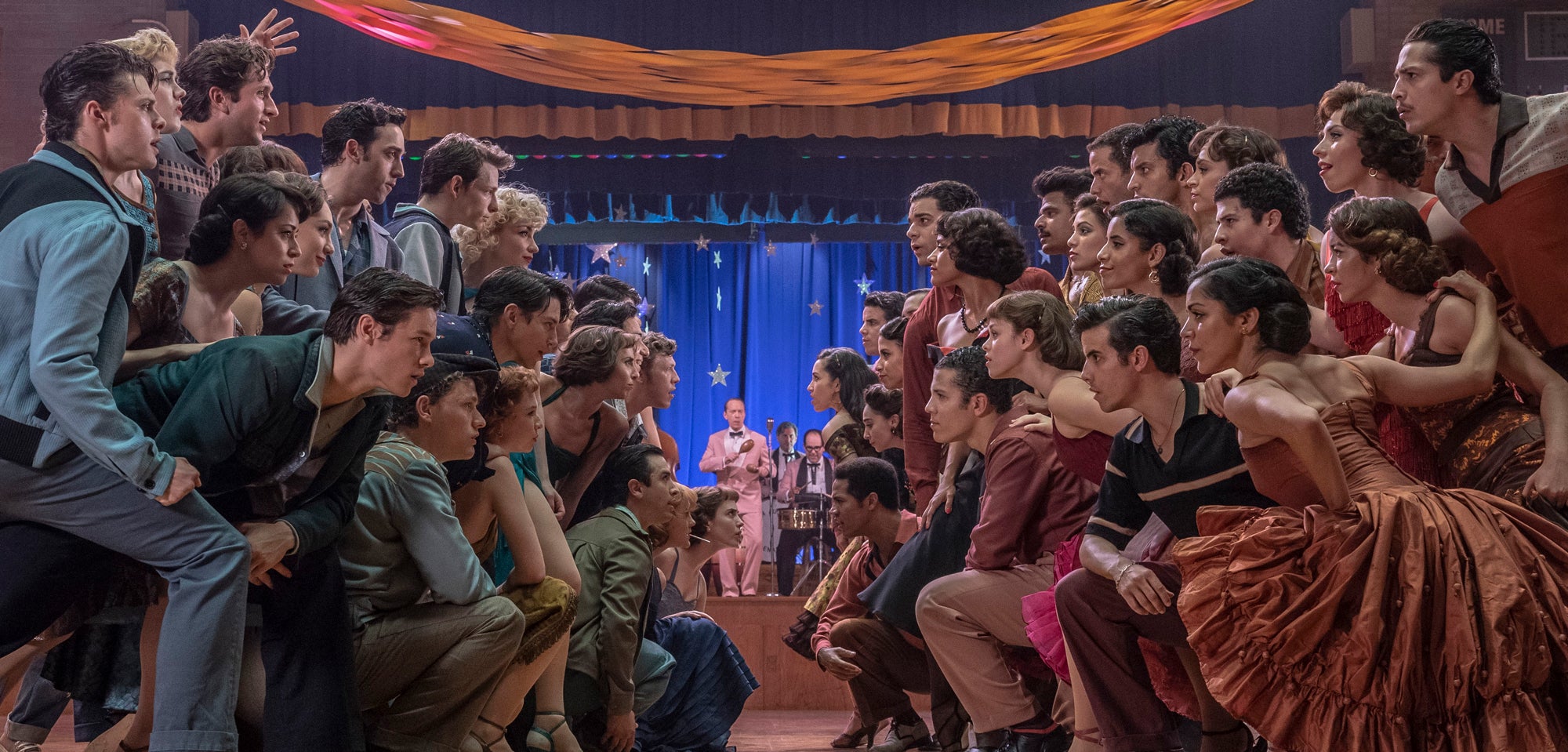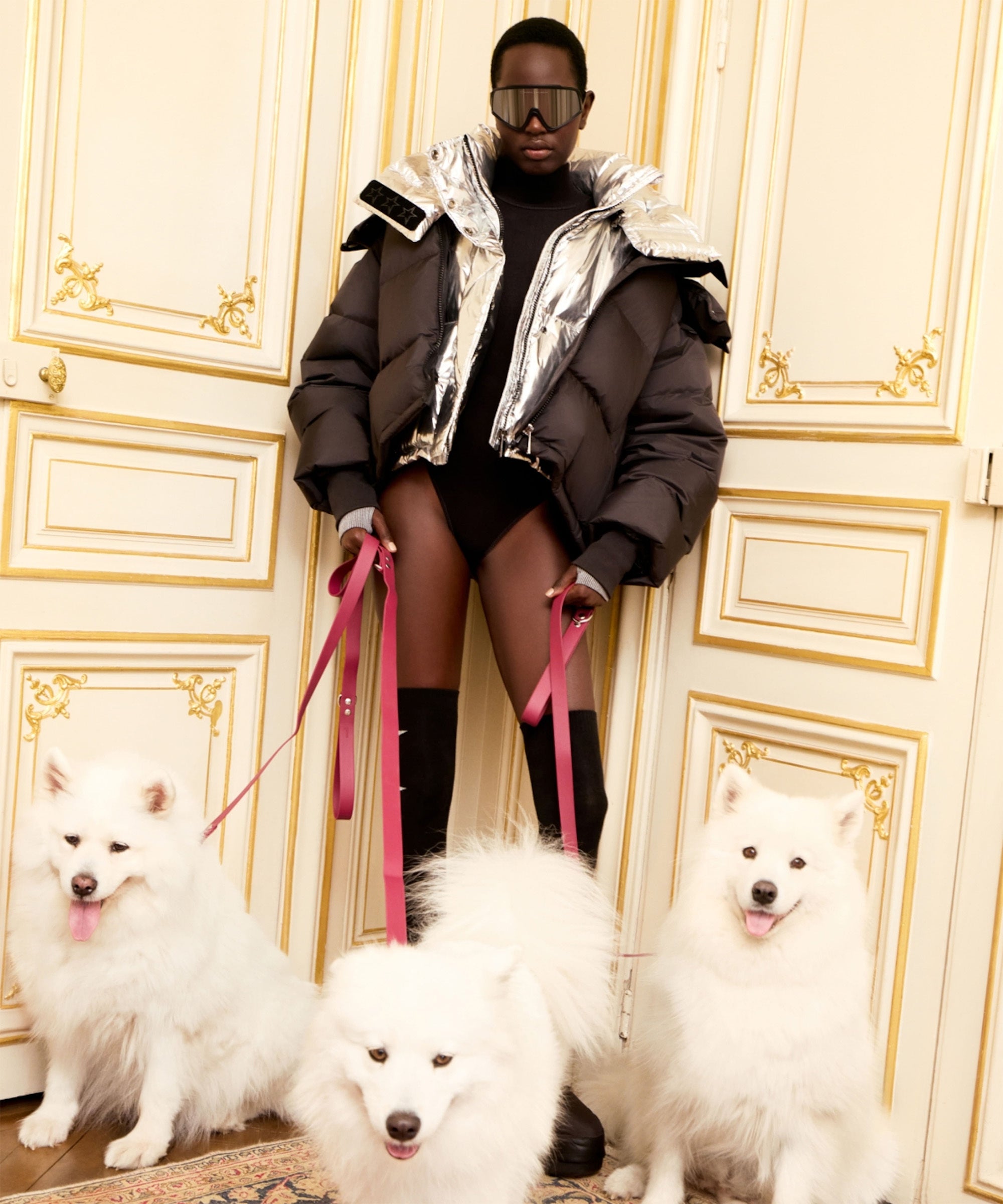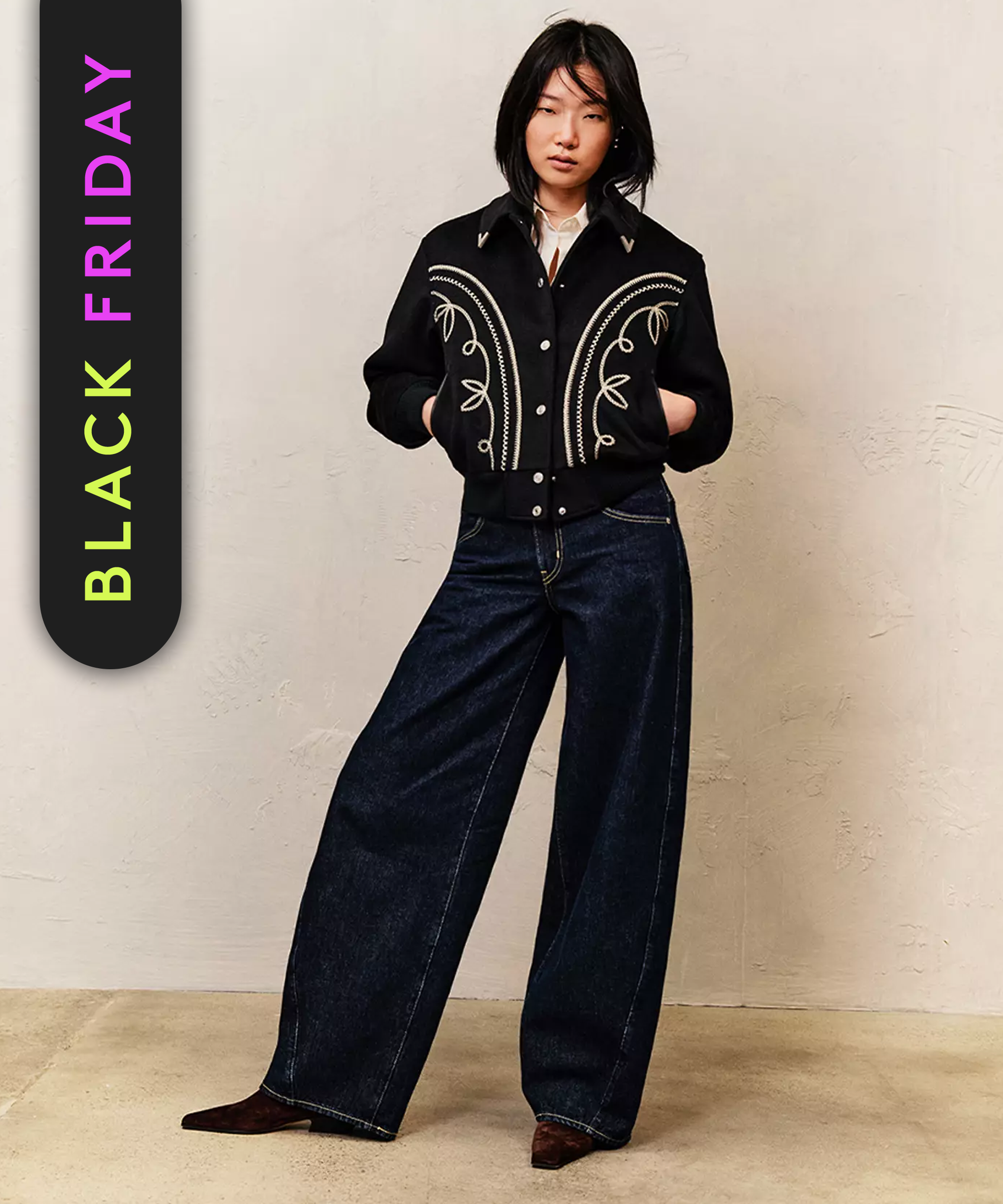
For costume designer Paul Tazewell, the new West Side Story movie — directed by Steven Spielberg, out in theaters now — is a “full circle moment.” Back in high school, the Ohio native played Sergeant Krupke in a production of the famed musical. Even so, Tazewell says his familiarity with both the stage production and the 1961 movie adaptation didn’t make the task of creating costumes for this year’s remake any less intimidating. “That story is beloved by so many,” he says. “So that was the first daunting point: ‘How do I create a world that will stand up to the expectation of audiences?’”
Set in 1957, West Side Story follows two New York City gangs — the European-American Jets and the Puerto Rican Sharks — that are vying for ownership over Manhattan’s titular neighborhood. After a tragic event occurs, an even larger divide forms between the two groups. Caught in the middle of the feud are two young people in love — Maria (Rachel Zegler), who is Puerto Rican, and Tony (Ansel Elgort), who is Polish-American.

To tell the story and emphasize the rift, Tazewell chose two different color palettes for the two camps. “It goes all the way back to Romeo and Juliet, when you’re setting up Montagues and the Capulets,” says Tazewell. “I wanted to take that point of view with the Jets and the Sharks.” In one scene (photo above), the Jets are inside the gym in blue, green, and gray shades. Meanwhile, the Sharks are in warm red, maroon, and brown hues, clashing with the cool palette of their sworn enemies.

The styling choices were also markers of identity in the film. The Jets, for example, wear blue jeans, while the Sharks are always in neutral-toned slacks. For Tazewell, that choice became the building block for the rest of the costumes. “Denim has become so iconic for Americans that I thought it was absolutely appropriate for the Jets to mostly be in those,” he says. For the Sharks, though, he chose to reference black-and-white imagery from Manhattan in the 1950s and 1960s, pulling guayaberas — a men’s summer shirt, characterized by two vertical pleats — polo shirts, and high-waisted pants for the film.

Rivalry and love story aside, West Side Story is a coming-of-age tale for its protagonist, Maria, which came through in costumes. The first time viewers see Maria, she’s getting dressed in a white lace number to attend her first dance in New York City. Right as she’s getting ready, Anita (Ariana DeBose) comes in with a red waist belt, which Tazewell says is a symbol of Maria becoming a woman. As she goes against her family by going on a date with Tony, Maria steps away from the white, wearing a maroon top-and-skirt combo instead. “She’s realizing that she has her own point of view,” says Tazewell. “She has a sense of style that is maturing.”

Although Tazewell referenced the work of costume designer Irene Sharaff, who worked on the Broadway musical and its film adaptation, he also tried to modernize the original looks. One of the most memorable pieces in the 1961 film is worn by Anita (then played by Rita Moreno), who wore a purple, short-sleeved dress with a full skirt, adorned with red, tulle ruffles underneath to perform “I Want To Live In America.” This time around, both the song, which has been heavily criticized for its remarks toward Puerto Rico, and the dress got an update, with Anita wearing a yellow version of the look that features a halter neckline with off-the-shoulder sleeves and bow details.
Then, there is the character of Valentina (Moreno), a new addition to the Spielberg remake. Valentina is a Puerto Rican woman, who was married to Doc (a character from the original musical) before he passed away, inheriting the drugstore they both owned. Tazewell worked closely with Moreno to create Valentina’s wardrobe, with the actress deciding her character should wear pants, not skirts. “I think it was a smart decision because she had taken on the pants of Doc, her husband,” he says. “She needed to have that kind of masculine grounding against all these boys that were coming into her space.”
While working on remaking one of Broadway’s favorite productions may have seemed daunting at first, Tazewell says he came out the other side with a deeper understanding of the story’s place in our current climate. “We’re still struggling as Americans with how do we live together?” he says. “This film becomes very timely towards that and showing moments of great joy and great pain, and that is representative of where we are.”
Like what you see? How about some more R29 goodness, right here?
An Icon Just Joined <em>West Side Story</em>




